Imagine a vegetable garden where your plants work together to fend off pests, enrich the soil, and maximize your harvest – sounds like a dream, right? Well, it’s not just a fantasy. You can create a thriving oasis in your backyard through companion planting.
Companion planting is an age-old technique that pairs specific plants to create mutually beneficial relationships. By strategically arranging your vegetables, herbs, and flowers, you can harness the natural synergies between them to boost your garden’s productivity, reduce the need for chemicals, and enjoy a bountiful harvest.
This article explores 12 proven companion plant combinations that transform your vegetable garden into a lush, low-maintenance oasis. From the classic pairing of tomatoes and basil to the ingenious “Three Sisters” method, these dynamic duos and trios will have your plants working together to create a healthier, more vibrant ecosystem. Get ready to wave goodbye to pests, welcome in the pollinators, and enjoy the fruits (and veggies!) of your labor.
Tomatoes & Basil
If you’re a fan of classic Italian flavors, then you’ll love the partnership between tomatoes and basil. These two culinary superstars taste great together and work harmoniously to protect each other from pests and diseases.
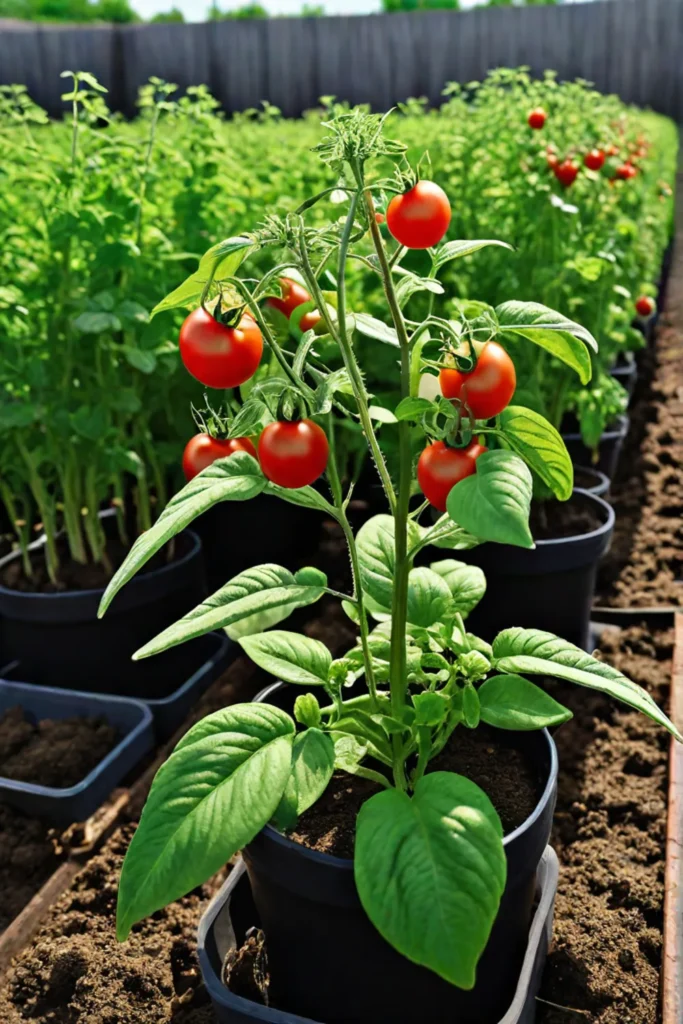
Basil acts as a natural pest repellent for tomatoes, helping to ward off flies, mosquitoes, and even aphids. Its strong aroma confuses and deters many garden invaders, keeping your tomato plants safe. In return, the tomatoes provide basil with much-needed shade, protecting the delicate leaves from the hot summer sun.
To get the most out of this dynamic duo, plant your basil plants about 12 inches away from your tomato plants, allowing enough room for both to thrive. Keep the soil consistently moist, as both plants prefer well-drained, nutrient-rich conditions. With a little care and attention, you’ll be rewarded with tastier tomatoes and a bountiful basil harvest.
Corn, Beans, & Squash
If you want to maximize your garden space and create a self-sustaining ecosystem, consider the classic “Three Sisters” planting method. This ingenious technique, rooted in Native American tradition, involves growing corn, beans, and squash together in a mutually beneficial arrangement.
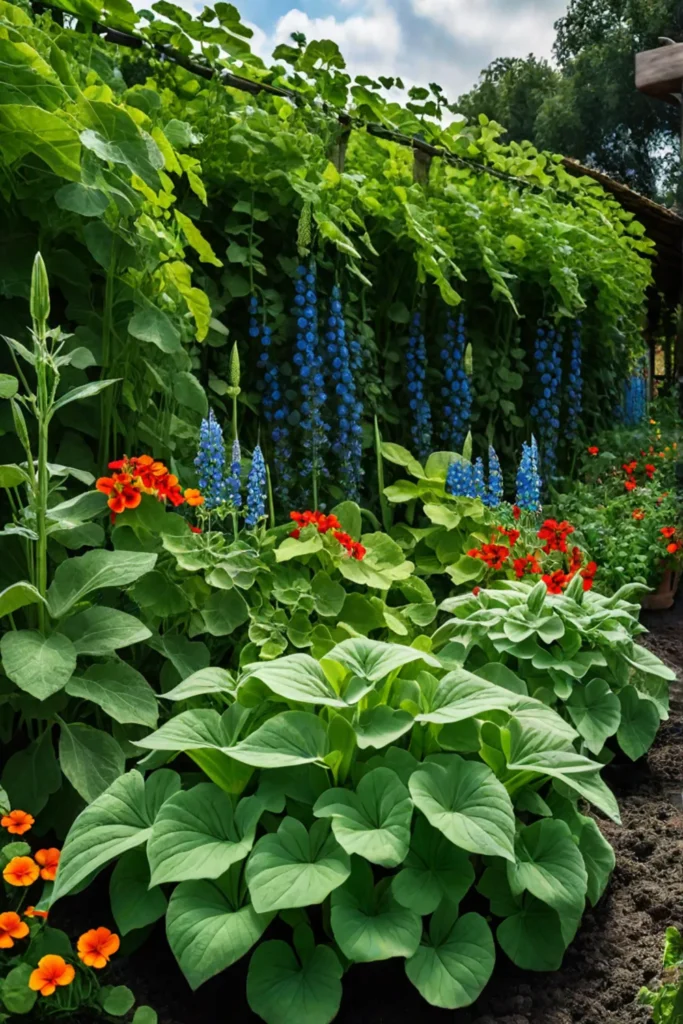
The corn provides a sturdy stalk for the beans to climb, while the beans, in turn, help fix nitrogen in the soil, nourishing the corn. The large, sprawling leaves of the squash plant create a living mulch, shading the soil and preventing weed growth. This trio works in perfect harmony, each contributing to the overall health and productivity of the garden.
To try the Three Sisters method, plant the corn first, allowing it to establish a solid foundation. Then, plant the beans around the corn stalks, letting them climb up for support. Finally, tuck the squash plants in the spaces between the corn and beans, making the most of your available real estate. This ancient planting technique can yield a bountiful harvest of flavorful vegetables with patience and care.
Marigolds & Most Veggies
Marigolds are the unsung heroes of the vegetable garden. These bright, cheerful flowers are a feast for the eyes and act as natural pest repellents, protecting your plants from a wide range of unwanted critters.
Marigolds contain toxic compounds to many garden pests, including nematodes, aphids, and fungal diseases. By planting marigolds alongside your vegetables, you can create a natural barrier that keeps these unwanted guests at bay, reducing the need for harsh chemical pesticides.
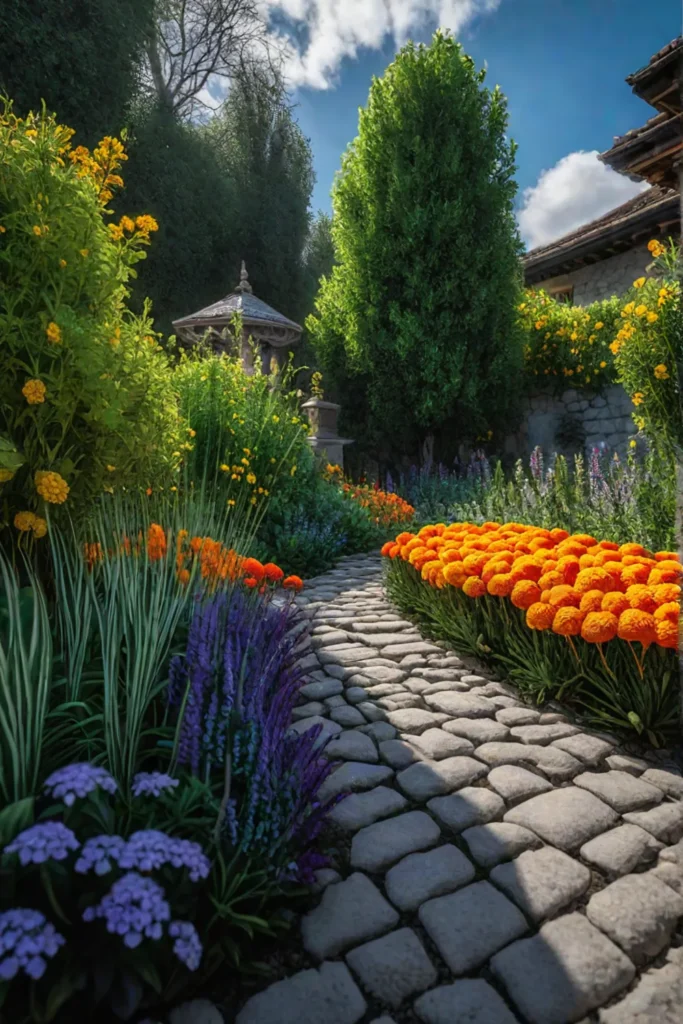
When choosing the right marigold varieties for your vegetable garden, look for French or African marigolds known for their strong pest-repelling properties. Tuck these vibrant flowers between your vegetable rows or use them to create a border around your garden beds. Keep the soil well-drained and give your marigolds plenty of sun, and you’ll be rewarded with a thriving, pest-free garden.
Nasturtiums & Cucumbers
Cucumbers can be finicky, often falling victim to pesky beetles and other garden pests. But did you know you can enlist another plant’s help to protect your cukes? Enter the humble nasturtium, a vibrant, trailing flower that can act as a natural trap crop for cucumber beetles.
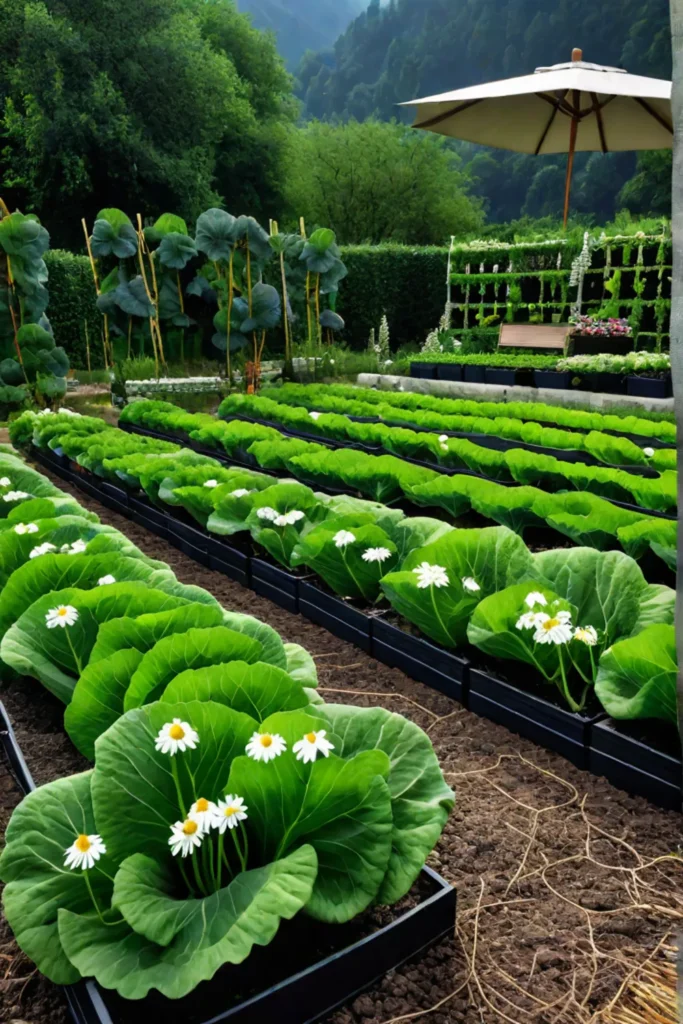
Nasturtiums are irresistible to cucumber beetles, which will flock to these plants instead of your precious cucumber vines. By planting nasturtiums alongside your cucumbers, you can lure the beetles away, shielding your cucumbers from damage. The nasturtiums serve as a decoy, drawing the pests in and protecting your main crop.
To incorporate nasturtiums into your cucumber beds, plant them about 12 inches away from your cucumber plants, ensuring they have enough room to sprawl. The bright, cheerful blooms of the nasturtiums will also add a pop of color to your garden, creating a visually stunning and functionally beneficial companion planting arrangement.
Borage & Strawberries
Strawberries are a beloved garden staple susceptible to various pests and diseases. Luckily, a charming little plant can help borage.
With its vibrant blue land ow and cucumber-like leaves, Borage is a magnet for beneficial Borages like bees, lacewings, and predatory wasps. These pollinators and predators help to keep common strawberry pests at bay, improving your overall yield and berry quality. Studies have shown that borage can enhance your strawberry flavor, making them even more delectable.
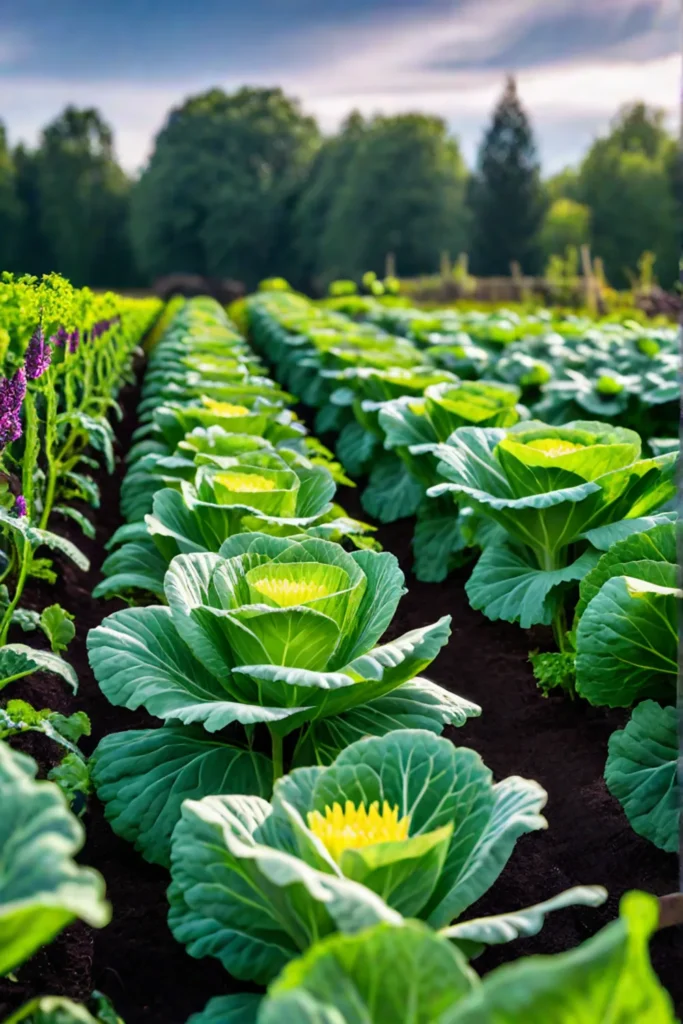
When planting borage and strawberries together, aim for one borage plant per every 3-4 feet of your strawberry bed. Borageill ensures the borage has enough space to spread, and it attracts a diverse array of beneficial insects. Be sure to water and care for both plants regularly, and you’ll be rewarded with a bountiful strawberry harvest and a thriving, pollinator-friendly garden.
Chamomile & Cabbage Family Veggies
Cabbage, broccoli, cauliflower, and other brassica vegetables can be finicky, often falling victim to pests and diseases. But did you know that chamomile can lend a helping hand? This fragrant, daisy-like herb is a natural companion for the cabbage family, offering protection and promoting overall plant health.
Chamomile repels certain pests that target brassicas, such as aphids and cabbage worms. Its strong, aromatic compounds are a natural deterrent, keeping these unwanted guests at bay. Additionally, chamomile helps to improve soil quality, increasing the availability of essential nutrients that brassicas crave.
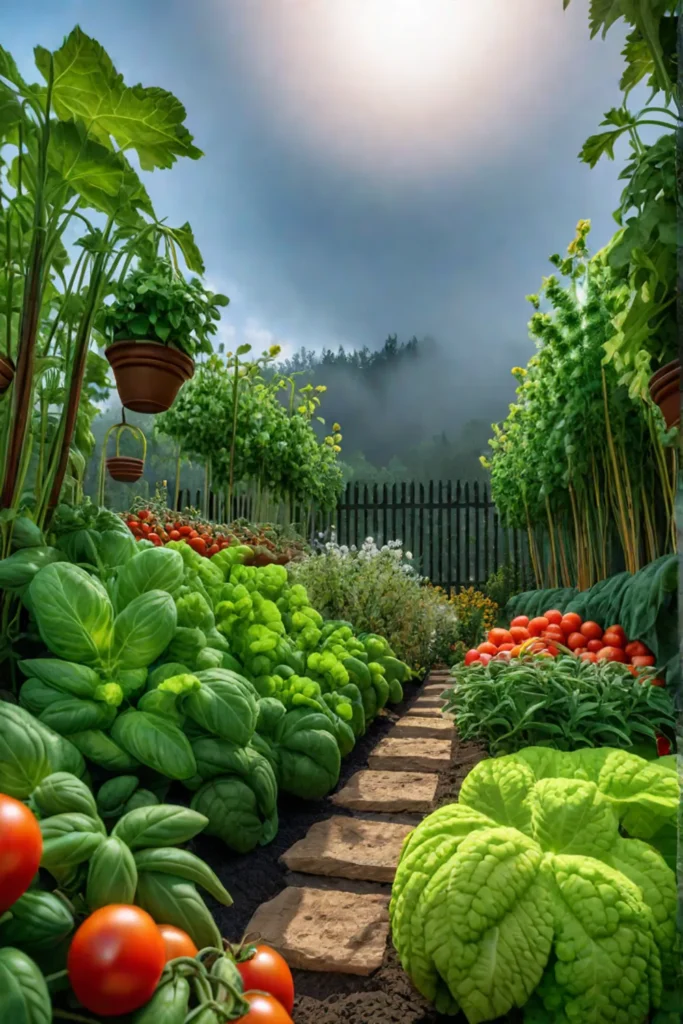
Tuck a few plants between your cabbage family veggies to take advantage of chamomile’s benefits. Make sure to give them plenty of sun and well-drained soil, and water them regularly to keep the soil moist but not waterlogged. With chamomile by their side, your brassicas will be better equipped to thrive, producing healthier, more abundant harvests.
Garlic & Everything
Garlic is a true garden all-star, offering various benefits for your vegetable plants. With its intense aroma and natural pest-repelling properties, garlic can be a valuable companion for multiple crops, from tomatoes and peppers to leafy greens and root vegetables.
The secret to garlic’s power lies in its chemical composition. It contains a compound called allicin, which gives it its distinctive smell and is a natural deterrent for garden pests, including aphids, beetles, and even some small mammals like rabbits and rodents. Planting garlic throughout your vegetable beds can create a protective barrier that keeps these unwanted visitors at bay.
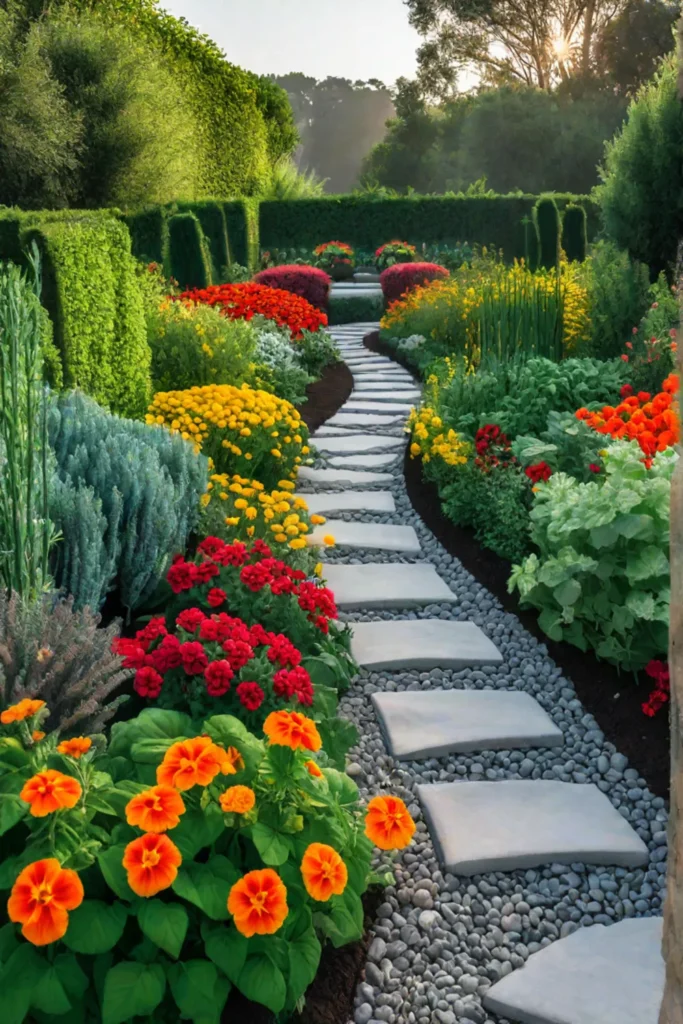
Incorporating garlic into your garden is easy—tuck a few cloves between your vegetable plants or around the perimeter of your garden beds. You can even make your own garlic-based pest-repellent spray by blending crushed garlic with water and applying it directly to your plants. With garlic on your side, you can say goodbye to pesky infestations and hello to a thriving, healthy garden.
Oregano & Tomatoes
Tomatoes are a staple in many vegetable gardens but can be susceptible to various pests and diseases. Luckily, an aromatic herb, oregano, can help.
Oregano is not only a flavorful addition to your culinary creations, but it can also enhance the growth and health of your tomato plants. Its strong, spicy aroma is believed to deter various tomato pests, including aphids, spider mites, and fungal diseases. Studies have shown that oregano can improve your tomatoes’ flavor, making them even more delicious.
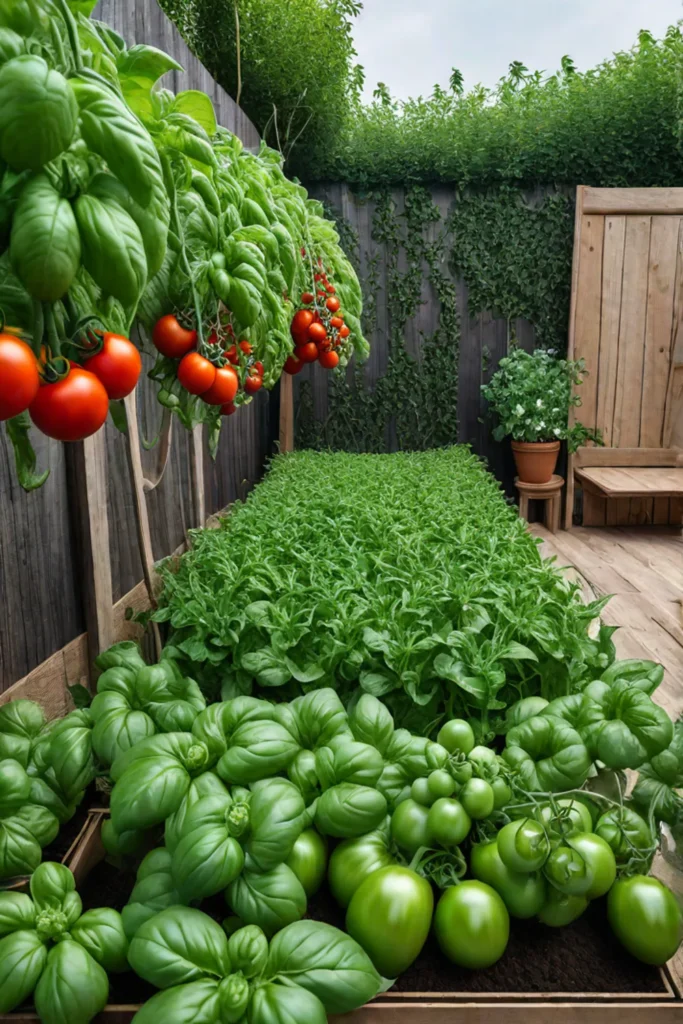
To take advantage of oregano’s benefits, plant a few oregano plants around the perimeter of your tomato beds or intersperse them throughout the rows. Be sure to give the oregano and tomatoes plenty of sunlight and well-drained soil, and water them regularly to keep the soil moist. With this dynamic duo working together, you’ll be rewarded with a bountiful tomato harvest and a naturally protected garden from unwanted pests.
Lavender & Brassicas
Brassica vegetables, such as broccoli, cabbage, and kale, are nutritional powerhouses but can also be prone to various pests and diseases. Fortunately, lavender, a fragrant, purple-hued plant, can lend a helping hand.
Lavender attracts beneficial insects, including ladybugs, lacewings, and parasitic wasps. These natural predators feed on common brassica pests, such as aphids, cabbage worms, and flea beetles, helping to protect your plants from damage. Additionally, lavender’s strong, aromatic compounds can be a natural deterrent, repelling some pests.
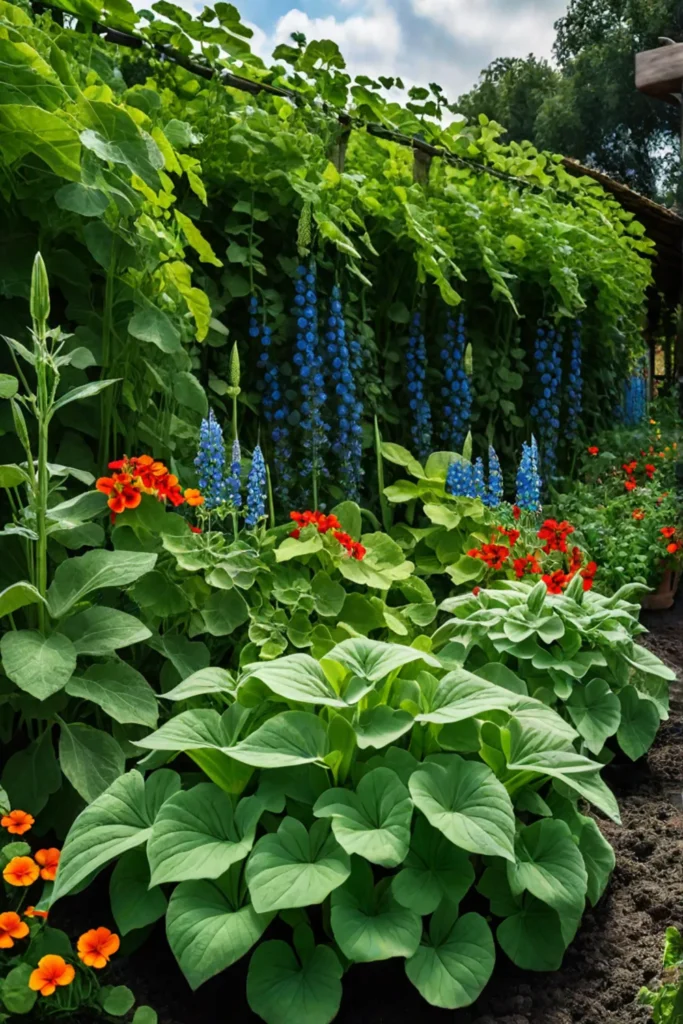
When incorporating lavender into your brassica beds, choose a variety with a high essential oil content, as this contributes to its pest-repelling and insect-attracting properties. Plant the lavender plants around the perimeter of your brassica beds or intersperse them throughout the rows, allowing for good air circulation and sunlight exposure. With lavender’s help, your brassicas will be better equipped to thrive, yielding a bountiful harvest of nutrient-dense vegetables.
Sunflowers & Corn
Sunflowers and corn make an unlikely but highly beneficial pair in the vegetable garden. Not only do they complement each other visually, but they also work together to create a mutually supportive ecosystem.

Sunflowers, with their tall, sturdy stalks, can provide a natural trellis for climbing corn plants, eliminating the need for additional support structures. This arrangement allows the corn to grow upward, maximizing available space in your garden. In return, the corn plants help to stabilize the sunflowers, protecting them from wind damage.
Beyond the physical support, sunflowers attract diverse beneficial insects, including ladybugs, lacewings, and parasitic wasps. These natural predators feed on common corn pests, such as aphids and earworms, helping to keep your crop healthy and thriving. To take advantage of this dynamic duo, plant the sunflowers around the perimeter of your corn beds, ensuring they have ample room to grow and support their taller companions.
Yarrow & Herbs
Yarrow is a versatile, hardy plant that can be valuable to any herb garden. It is known for its medicinal properties and attracts many beneficial insects, including bees, butterflies, and predatory bugs that feed on common garden pests.
By planting yarrow alongside your herbs, you can create a haven for these helpful critters, who will, in turn, help to keep your herb garden healthy and thriving. Yarrow’s strong, aromatic compounds can also act as a natural pest repellent, deterring unwanted visitors and protecting your herbs from damage.

When incorporating yarrow into your herb garden, choose a variety with a high essential oil content, as this contributes to its insect-attracting and pest-repelling properties. Plant the yarrow plants around the perimeter of your herb beds or intersperse them throughout the rows, ensuring they have plenty of room to grow and spread. With yarrow as your ally, your herb garden will be a vibrant, pest-free oasis that attracts diverse beneficial insects.
Calendula & Root Vegetables
Calendula, or pot marigold, is a versatile and beneficial companion for root vegetable crops. It helps repel common pests and can improve your garden’s overall health and productivity.
Calendula’s bright, cheerful flowers contain compounds that can act as natural insecticides, deterring pests like aphids, whiteflies, and spider mites from residing in your root vegetable beds. Additionally, calendula’s deep, extensive root system helps to break up compacted soil, improving drainage and nutrient availability for your carrots, beets, and other root crops.
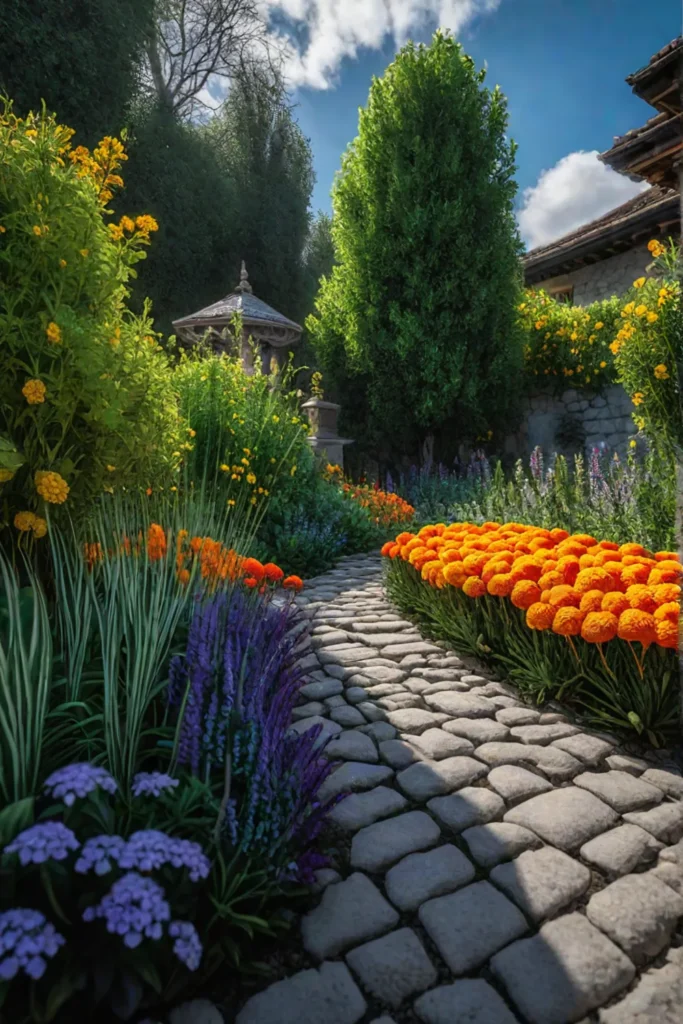
To incorporate calendula into your root vegetable garden, scatter the seeds around the perimeter of your beds or tuck them in between your rows of root veggies. Be sure to water the plants regularly and provide them with well-drained, nutrient-rich soil. With calendula’s help, your root vegetables will be better equipped to thrive, yielding a bountiful and pest-free harvest.
Conclusion
As you can see, the power of companion planting is truly remarkable. You can create a thriving, self-sustaining ecosystem in your backyard by strategically arranging your vegetables, herbs, and flowers. From the classic pairing of tomatoes and basil to the ingenious “Three Sisters” method, these 12 proven companion plant combinations offer many benefits, including improved yields, reduced pest pressure, and enhanced soil health.
So why not try companion planting in your vegetable garden? Start by incorporating a few dynamic duos and trios and observe how your plants respond. You might be amazed at the transformation as your garden transforms from a high-maintenance chore to a low-effort, high-yield oasis. With a little bit of planning and a lot of plant power, you can create a vegetable garden that’s productive, beautiful, and sustainable.
Ready to get started? Grab your gardening gloves and get planting! Your thriving, pest-free garden awaits.










